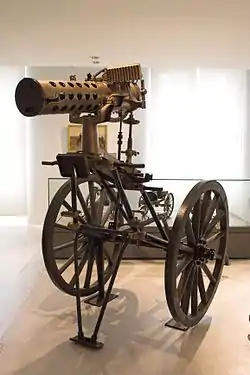Jean Lepage
Jean Lepage (1779–1822) was a well-known French gunsmith.[1] He worked for Louis XVI, Napoléon and then Louis XVIII. He was the inventor of fulminate percussion systems for firearms, which superseded the flint-lock mechanism and opened the way to modern firearms. This followed the discovery of fulminates by Edward Charles Howard in 1800.
Between 1807 and 1810, Lepage invented a new way to fire portative firearms, by using the mercury fulminate priming medium to be fired by the blow of a percussion hammer. The new method permitted the abandonment of flint-lock firing mechanisms and opened the way to modern firing methods.[2] The new mechanism used a magazine filled with fulminate primer, which would deliver a small amount of priming powder near the gun breech every time the magazine was cocked.[2] Since the fulminate powder was highly sensitive to humidity, methods of coating the fulminate in varnish were developed,[2] as well as methods of encasing the fulminate culminating with the invention of the percussion cap by François Prélat in 1818 and Deloubert in 1820.[2]


